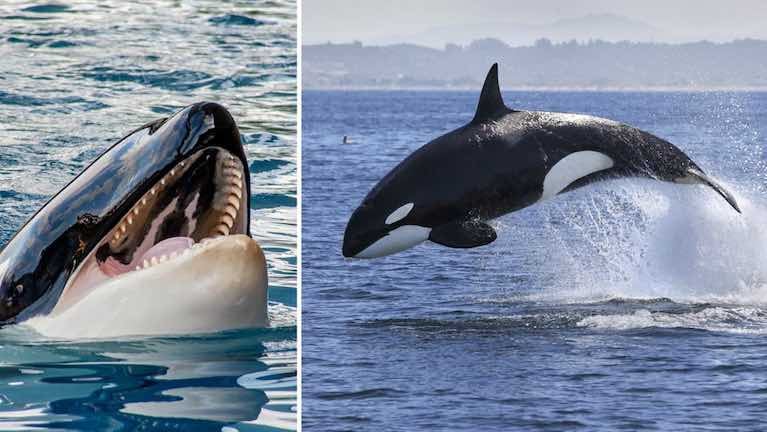Stories of whales attacking boats at sea and sometimes sinking them go back a long way in maritime history, and as often as not it has happened in such a sudden and frightening way that identifying the precise species has not been part of the narrative.
But since mid-September, an increasing number of reports of whale attacks off the coast of Spain and Portugal have identified the largest dolphin, the orca or "killer whale", as being responsible for a continuing spate of attacks. And with verified incidents of rudders being torn off and hulls and keels - usually of fibreglass sailing boats – being seriously damaged, the maritime authorities in northwest Spain have become so concerned that a quite extensive exclusion zone for smaller craft has been imposed off the rugged coastline between El Ferrol and Punta de Estacia de Bares.
 The exclusion zone for smaller craft off the rugged coastline between El Ferrol and Punta de Estacia de Bares
The exclusion zone for smaller craft off the rugged coastline between El Ferrol and Punta de Estacia de Bares
Several theories have been put forward to explain the unusually high incidence of these events, and in response to sensationalist local headlines of "TERROR KILLER WHALE ATTACKS", noted ocean voyager and marine scientist Vera Quinlan of Galway has made the reasonable point that it is humans invading their space who have described them as "killer" whales. They are in fact the largest species of dolphins, and it takes some of the heat out of the situation to give them their proper name of orca.
Nevertheless, the danger can ultimately be very real, and theories abound, such as the behaviour being a hostile response by whales to the sudden and marked increase in engine and propellor noise after some limitations of the pandemic lockdown was lifted in Spain, with coastal leisure traffic increasing to end a period of peace which was akin to the welcome silence which until recently prevailed onshore around noisy airports.
But as to whether or not it's an inbuilt whale dislike of fibreglass is difficult to assess, as the vast majority of boats have long since been constructed in GRP.
It's also said that modern hull shapes with the keel separate from the rudder may seem to whales like some sort of threatening sea creature, while another notion is that the whales approach the boat with very friendly or indeed amorous intentions, and then take a whack at it on being found they were mistaken.
As for keeping the engine running, the fact is a number of the attacks have taken place on boats which were motor-sailing.
And finally, there are those who reckon that the colour of your underwater paint is a significant factor. Old salts will tell you that having a white or red under-body is just asking for trouble – dark blue or black anti-fouling is your only man if you want to stay onside with the ocean cousins.































































